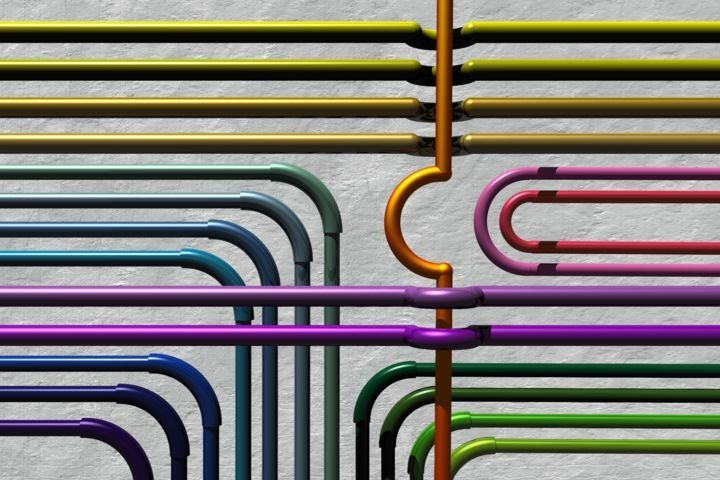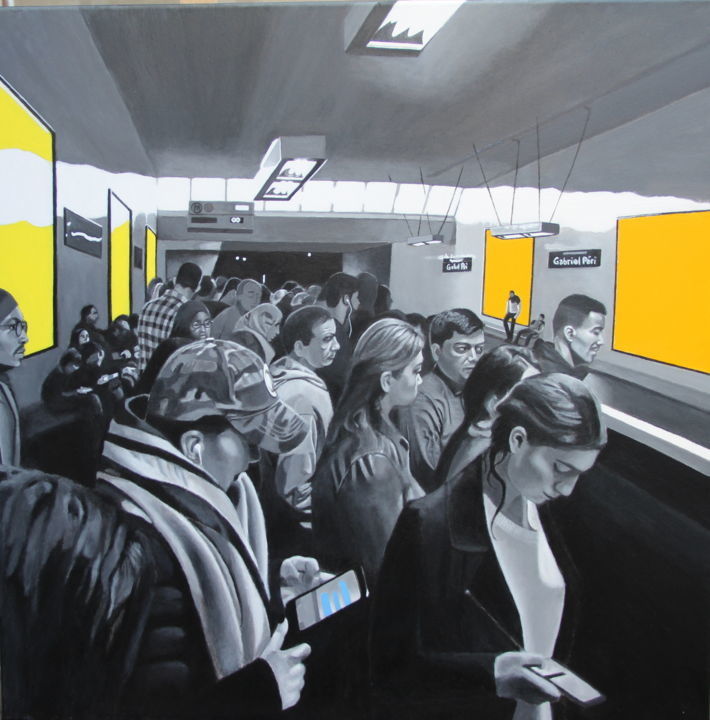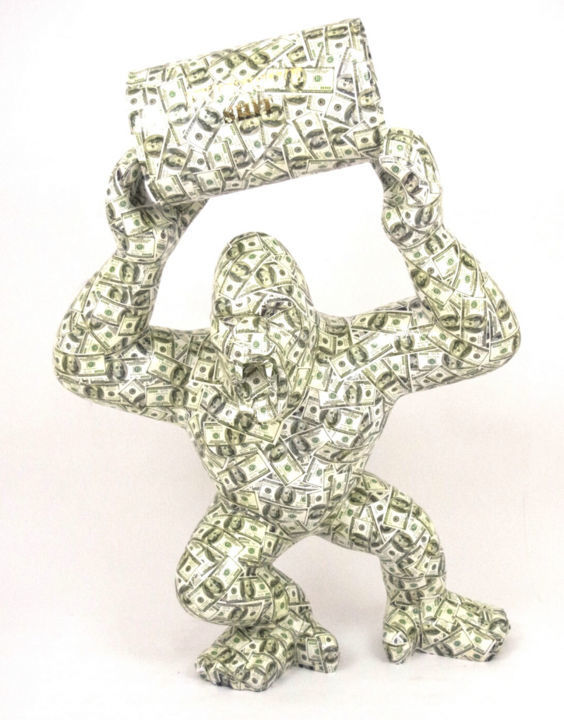Promote your art on the internet to sell

To sell art in general and on the internet in particular, you need to ask yourself the right questions. Indeed, if your clientele consists only of your knowledge and is over 80 years old on average, even if you should never generalize, investing in the sale of art online is not necessarily the best idea.
If in most cases, online art sales have become essential for artists, everyone must find the solution that best corresponds to the specificities of their work.
First of all, you have to understand what is involved in selling art online. This means in particular that there will be shipments to be made. So you have to ask yourself the right questions right from the start. Am I equipped for online sales? It is important to clarify your lifestyle and your work organization. If you live in a studio and produce miniatures in your studio, you're fine. But if you start stocking up packing and packaging products for your shipments in your studio, it can quickly become difficult to deal with. Likewise, an artist who is very often on the move, even if he is hyper-connected, and responds quickly to his contacts, is confronted with a real problem if he cannot send the work to the client for thirty days, or even more. It is therefore necessary to check if the activity of selling art online is compatible with your way of living and working.
Most galleries offer to mention whether the work is available immediately or not and it is often even possible to exhibit online without putting your work up for sale. If you only want to show your work, this is a good option as online art galleries with high traffic will act as a traffic booster to your work. It is not uncommon to have tens of thousands of views of a work, which is fantastic for the fame of the artist and his work.
1. Tools and actions to promote one's work

Many artists hesitate to get started. They think that what they are doing is not innovative enough, that there is no audience for their art, or that they are not good enough. But this is very wrong! There is an audience for all art. What affects someone in a work will not affect another person, and vice versa. It is therefore very important to properly build your network of collectors. The artist's internet presence has become as important for Karl and his internationally recognized installations as for Martine and his watercolors for tourists passing through his village.
A number of tools are at your disposal to help you in this process:
- The Blog : every artist should have one! It's the blog that allows you to follow you, and get to really know you. You don't have to talk only about your news, you can talk about interesting exhibitions that you have seen, or something that inspired you to create a series of works ... In short, everything that concerns you and your work and may be interesting to read. You can post there messages with pictures which is recommended and really show your personality through the messages you publish (note that a too long message will rarely be read in full).
Of course you are not selling anything, but it is precisely through what the public will read that by sharing your ideas, your favorites, the love of your work, will then want to acquire one of your works. It is therefore essential to publish interesting and rich messages. In addition, blogs are often well referenced on search engines and in particular Google, and therefore it gives you better visibility.
- The Forum : Many art sites have forums. This is a very interesting tool that must be used at all costs. The more you intervene, the more people who seek information about you will find. They will thus have complete confidence to buy. Indeed there is nothing worse than an artist on whom one does not find or very little information on the internet. On the forums you can comment on topics that have already been created, you can launch debates or answer a question asked. You assert yourself as a specialist in your field, and without a lot of work you can improve your notoriety and your visibility on the net. Anything that gets people talking about you is okay to take.
- Create virtual collections and share them : Most online art galleries offer the possibility of creating collections. This possibility is offered to both artists and collectors. For the collector the advantage is obvious. He can thus create a list of works by artists he likes, then freely choose the work he will buy.
For the artist, it is also a way to make himself known. He can thus create his own collections and show his favorites and share them with his audience. It is a good medium of exchange. Google and search engines also record this, and the more visits you have to your pages, the better you will be listed in the search engines. Create your collections by theme to make them more beautiful. It's always exciting to discover the work of other artists and the more you do it, the more you improve your search engine rankings.
- Video : Video is a very interesting means of promotion. Everyone loves to watch videos. If you've been on TV before, highlight it and show your video. If you have not yet had this chance, do not hesitate to make a short video of you working in your workshop associated with images of your works. Currently with a simple smartphone and the editing tools of video platforms, we can already create something correct. This allows collectors to get to know each other better and to see “the secrets” of the creation of a work. Videos are a very fast growing medium because it is popular and easy to use. ! You can post them on all social networks, and showcase them in lots of online art galleries. So don't hesitate to post videos regularly.
- Social networks : More than 30% of collectors say they are influenced by what they read or see on social networks. It has therefore become something essential! It is imperative to be present on the most important social networks. Their seemingly simple use hides a few secrets. It's up to you to use them well to attract the public to your works.
Most online art galleries have a statistical part that allows you to have a clear overview of the people who visit your pages: number of visitors, country of origin, gender, time they stayed on the pages, number of page views, popular works ... If this data is provided by Google Analytics, then you have a very precise vision of your audience. All of these insights are extremely valuable, as they allow you to make decisions and quickly see what is working and what is not.
Orlando V, an Italian artist living in France for over 15 years, opened an online art gallery six months ago. His work on studies of classical architectural motifs revisited in a contemporary way is very popular with his French audience. He focused his presentation only on the French public. But he quickly realized thanks to the statistics of the online art gallery that 30 to 35% of the traffic on his pages and his profile came from Italy. He therefore corrected and added information in Italian. Following this modification, in the following month, he made two sales to Italian collectors.
Remember that it is very important to regularly upload new works to attract visitors.
2. Tools and actions to create a community
 Painting by Jean Paul Tarasco
Painting by Jean Paul TarascoIt is all well and good to sculpt or paint "in your corner", but art is definitely made to be shared. It is therefore advisable to meet people who will be sensitive to your creations. Often, the first sales and the first crushes come from those close to you.
Selling on an online art gallery is undoubtedly a plus, as you will attract new enthusiasts for your art. But never forget the starting core of your collectors! Indeed, it will always be easier and more effective to mobilize people who know you and who appreciate your art than strangers.
First of all, you need to assess the number of people around you who appreciate your art. It could be your family, your work relationships, or your friends. It is up to you to register their contact details so that you can keep them informed of your work.
Social networks will also help you recruit new enthusiasts for your work. If you have a Facebook account where you showcase your work, people who follow you are already aware of your work and are therefore very receptive. If in addition you offer direct sales on Facebook with an art store integrated into your account as some online art galleries offer, you are sure to reach as many people as possible.
Most online art galleries also function as a social network. It is therefore possible to follow the work of an artist and share the works that we like on social networks. You can thus, thanks to your presence on the internet, regularly increase the number of your art lovers and collectors. It is an important source of recognition essential to build a career.
Finally, online art galleries often have mailing systems that you can use to send a message (a new creation, an exhibition) to your collectors and members who follow you. All of this does not necessarily take a long time and will have a significant impact on your sales and the development of your career.
A number of tools are at your disposal to help you create this community:
- The newsletter : it is a key element of your communication. Indeed you must regularly save the email addresses of your contacts. You will be able to inform them regularly of your exhibitions, your new creations or your news likely to interest them. It's a simple, effective way to stay in touch with people who admire your work. Many online art galleries offer these types of tools. It really is a great promotional tool: you can create and manage your own newsletter and keep your visitors informed. In general you can subscribe / unsubscribe your recipients whenever you want. In many galleries when they are multilingual, you can also manage the sending of newsletters in different languages. So you can send a mailing to your American contacts in English and to your French contacts in French. Don't forget to check the result of your mailing! Most online art galleries have statistical tools that will allow you to see the effect of mailing on your site traffic. If you made a mailing with a promotion or a free discount coupon, you can also measure the result on your sales.
- Advertising : advertise on the internet. There are different ways and media to advertise. Advertising is never free, so if you don't have a budget for it, this is not the way to go.
For an advertisement to be effective, it must be seen regularly. Therefore, advertising just once will in most cases be ineffective. You have to plan your advertising campaign over the long term. That is to say renew it regularly. It is strongly recommended to diversify advertising on different media depending on the means you can invest. Internet advertising is relatively inexpensive (it often involves an investment of a few tens of euros) compared to other media. In addition, you can perfectly target your advertising.
There are mainly two types of internet advertising: advertising in search engines and advertising on specialized sites. Advertising on search engines (Google). You define a list of keywords for which you want to be found. You choose how much you can invest daily and only pay when someone clicks on the ad. The advantage is that you can easily manage your daily budget. Thus, if you have set a budget of 10 euros per day, once the 10 euros have been consumed, you will not start paying again until the next day (if that's what you have chosen). Please note that the price per click is very variable depending on the keyword you have chosen. So if you choose a very general word like "art" or "painting", the click will be much more expensive than if it is your artist name. Another disadvantage, if you paint bikes for example and you choose the keyword "bike" for your campaign, you risk having clicks and paying for people who are not necessarily looking for a work of art. Your campaign may then be ineffective.
- Advertising on specialized sites : some online art galleries or art blogs offer the option to advertise directly on their site. The advantage is that the people who visit the site do not come by chance: a priori, it is because they like art. You will therefore reach an already well-targeted audience. Advertising can take several forms: in the form of permanent banners, that is to say that you pay a fixed amount for a given period (a month, a week ...) or in the form of an alternating banner. Your works will alternate with others, and you only pay when they are seen. The advantage of this solution is that you choose the page that suits you to advertise (home page, search page ...) and this type of advertising is not intrusive and there is a high click-through rate with this type of advertising.
3. Use social networks

Why use social networks?
Who hasn't heard of Facebook, Twitter or Instagram? Social media are everywhere! Easy to use, they allow people to discover their work, find new customers, keep in touch with their customers, and allow greater proximity to their customers. Why does it work?
Social networks allow you to bring together a number of users around you and your work. If someone doesn't like what you are doing, they are unlikely to follow you on social media. We can therefore generally say that the people who follow you are particularly targeted potential customers because they like what you do.
Social networks have the particularity of making a “snowball”. So when someone shares an image on their own page, people who follow them will also like that image and share it. In short, we can say that it is “VIRAL”: when content pleases, it can be shared infinitely very easily. For example: people have an average of 200 friends on Facebook. If 200 people share your post with their friends, that's 200 times 200 people affected, or 40,000 people. It is a very powerful promotional vector. There is thus a great chance that they will come to discover your page and your work.
A third of people browsing art sites say they are influenced in their purchases by what they see on social networks. And this is particularly the case with “novice” collectors. The most widely used social networks for promoting art are Facebook and Instagram, respectively.
Before embarking on the adventure of social networks, target the audience you want to reach: young people, urban, professionals, women, lovers of a painter or an artist in particular ...
Things to do :
Present only good quality content, interesting, original, well presented to interest people (normal), and make its content available for sharing on social networks, with share buttons on all pages, all images, for making it very easy for the public to share the photos with their friends.
Develop your own network on Facebook, LinkedIn, YouTube, etc., in order to have as direct contact as possible with the public.
Rely on your physical network: friends, colleagues, family, they are the most able to share content and distribute it, especially at the beginning.
In general, Facebook is the most used social network. Its “addictive” content is a prime target for selling and promoting art.
How does it work ? It's very simple, you need to create a page on Facebook. Once your page is created, you can regularly post images of your works, chat with people who follow you, comment on your publications and mention your exhibitions by creating a “special event” on Facebook. You thus establish a special bond and proximity with your "fans" who are all extremely targeted potential customers. Among them inevitably hide some of your future collectors. Some art websites or groups on Facebook allow the publication of works by artists in their newspaper. Do not hesitate to publish on these pages! Indeed if you are part of a group of Claude Monet amateurs, and your style is close to his work, by posting your work on this group, you put yourself forward and you will attract new "fans", therefore new potential customers.
There are other ways to promote your work on Facebook. So you can decide to advertise. You create a message with an image of your works, you choose targeting criteria with the audience that interests you. You then pay for your advertising for a given period. The advantage of this system is to quickly recruit a large number of fans of your art, but you obviously have to budget to finance your campaign.
Since Facebook is also becoming a search engine like Google, it is very important to optimize your Facebook page and its newspaper as much as possible. As with online art galleries, correctly describe each publication, mentioning everything that is important (name of the work, technique used, size, year of production).
Finally, there is a well-kept secret available only on a few online art galleries! This is a store integrated with your Facebook account. Strictly speaking, this is revolutionary, because until now direct selling on Facebook has been relatively rare. Now with this system you publish a new work on your newspaper and on your online art gallery, it is immediately available in your own store on your Facebook page! Buying is made easy! The buyer can buy from you directly without leaving your Facebook account.
Don't forget that if you have a multilingual audience, it's possible on Facebook to post in another language and target people who follow you in that language.
Remember that on most online galleries, a button allows you to share an image on any social network of your choice.
Other social networks work more or less the same. Instagram is the rising social network! For now it is more of a showcase than a place of sale, but that should change quickly. It allows you to show your news almost instantly. You can show your participation in an exhibition and photograph your collectors and contact with your work and make them instantly visible to everyone on Instagram. This is the reason why street and ephemeral art artists are "addicted" to this social network.
Pinterest is also interesting because it makes it possible to reach a more feminine population who loves to share their “favorites” and good shopping tips. So not to be neglected if it is your privileged target. Pinterest is widely used to search for ideas on a thematic basis, it is one of the first referents with Google image.
If your target is to sell to professionals (decorators, hoteliers, restaurateurs ...), then favor Viadeo and LinkedIn. It works a little differently on these social networks that are full of potential customers. Your strategy will be a little different, you will of course share your content (works, exhibitions, research ...), but the goal is to create a debate with other professionals. It is by exchanging that you will meet new customers. There are many groups on specific themes: art, decoration, architecture ... It's up to you to find the group that matches your criteria and to participate in the debates. It is by showing that you are a specialist on such and such a subject that you will pass for an expert. You will have many contact requests, and in the long term, this will be very positive for your career and the sale of your works.
Many online art galleries operate as a social network. You can create your own collections and share the works you like on other social networks. You have every interest in being active on these networks, it is very simple and it will help you to better position yourself in searches on the art gallery itself, and on search engines.
We must of course not forget video platforms like YouTube which allow video sharing on all social networks. Increasingly popular, reading is boring for many people, video is an alternative way to get your point across.
Twitter is also very useful, it can synchronize with other social networks, and above all it allows you to share your news in real time. The more subscribers you have following you, the more you increase the number of potential customers.
If your market is targeted on a particular market, in this case it is necessary to favor a social network from that country to communicate. So for example if Facebook is very popular in Russia, the social network VKontakte is number one in this country. You will therefore have to favor VKontakte if you are targeting the Russian market. Each country having its own specificities, it is necessary to create an artist profile on the social networks of the countries that you are targeting.
If you're having trouble organizing, posting, or running your social networks, be aware that most social networks provide tutorials to help you publish and improve your posts to better target them and make them more effective.
Social networks have five main qualities :
- Increase in your audience and therefore your notoriety
- Increased traffic to your pages on your online art gallery and website
- Very cheap promotion tools
- Better referencing on search engines.
- Creation of a loyal group around you and your work.
So don't hesitate to open artist accounts on social networks.
The intelligent use of these tools, adapting them to your particular situation is the winning asset of a good promotion. Do not forget to regularly measure the result of each action you have taken and to take corrective action in order to succeed in achieving the objectives you have set for yourself.
4. Additional income
 Sculpture by Bart Stillekens
Sculpture by Bart StillekensTake advantage of the art print boom
Many European artists are not interested in selling reproductions of their works. They prefer to sell originals, they think reproductions compete with them. Yet this is a misconception! It is enough to see the North American craze (United States, Canada, Quebec) for reproductions of works of art, to understand that they do not compete with the sale of original works. It has become a significant additional income for artists. In the United States, many artists, photographers and even art galleries do not hesitate to sell reproductions of the works they offer to collectors. They thus reach another clientele who do not necessarily have the means to afford an original work. Moreover, instead of competing with original works, they enhance them by promoting them and disseminating the artist's work to as many people as possible. In addition, without any additional work, the artist regularly receives royalties.
You can find reproductions of all the famous artists on the market, why not offer your own! Even if the craze is more marked on the North American continent, this market is constantly increasing in Europe. It would be a shame not to take advantage of it. Many online art galleries offer the option of selling art reproductions in all types of media. The operation is quite simple. A customer orders a print of one of your works. He pays on the online art gallery and the gallery takes care of everything! Printing, shipping and even after sales service. You get the royalties that are paid to you. Thus, even a sold work continues to make money.
Getting into art printing requires preparing your images. First of all, the images must be perfectly framed and centered. If you present a painting with its frame and part of the wall behind the frame, the reproduction will be printed as well. If there is an outline on your image, a flash of flash, or any other mark in the photo, consider removing them as well, as they will also be printed. The higher the definition of the image, the higher the number of pixels, the larger the print size can be.
Also think about your positioning. You can print on all media, and the quality varies greatly depending on the media used. You can print on T-shirts, mugs, pens, mouse pads ... or on more classic supports such as posters, printing on canvas, framed printing, American box ... Except in special cases, the The artist should rather favor printing on decorative supports which are more flattering and not demeaning. Here again there are different qualities depending on the papers used. You will have to choose according to your objectives and the clientele. If you have a low price point and a clientele that pays attention to price, then it will be better to favor art reproductions that are inexpensive and accessible to as many people as possible. Conversely, if you have a more upscale positioning, you will have to favor high-end prints on 100% cotton paper. In general, the buyer buying a quality print, on a beautiful paper or on a beautiful canvas is always satisfied. When printing a work on conventional printing paper, the paper's resistance and UV resistance is significantly lower.

More and more artists are offering numbered and signed series of reproductions of their works. It is also a way to increase your income by offering an affordable work. Certainly, this is a reproduction, but with the artist's signature and a limited edition which guarantees a certain value in the print. In these cases, it is preferable to choose a format and not to offer numbered prints on different media and in different formats in order to ensure lasting value for the reproduction.
You can also showcase this on social media, especially if you have a sales store on your Facebook account. For each new work created, you can at the same time offer your contacts an accessible and beautiful reproduction.
The collector being behind a screen, can sometimes hesitate to buy a work that he has not seen, especially when the price is high. We can regularly observe people buying a reproduction of a work and then some time after buying the original. So it's really a new way to sell!
It is therefore important to keep images of his works sold on online art galleries and especially not to remove them, because you can still earn royalties. Note that a number of online art galleries offer artists to sell digital files of their works in the same way as online photo sales sites. It is thus possible to sell a right to use the image of his work for use on a given medium (internet, magazine, product, etc.). Always check that you keep all of your image rights before offering your works for sale as digital files. In addition to receiving royalties, it is a very effective way to reach the public and increase their notoriety.
Any artist should offer this selling option. Indeed, it is very easy to set up, there is no work and the artist regularly receives royalties with nothing more to do.
Chapter 4 - Extract from the book written by Nicolas Sarazin, Artistic Director of Artmajeur "How to Sell Art on the Internet: The Keys to Success?"


 Nicolas Sarazin
Nicolas Sarazin